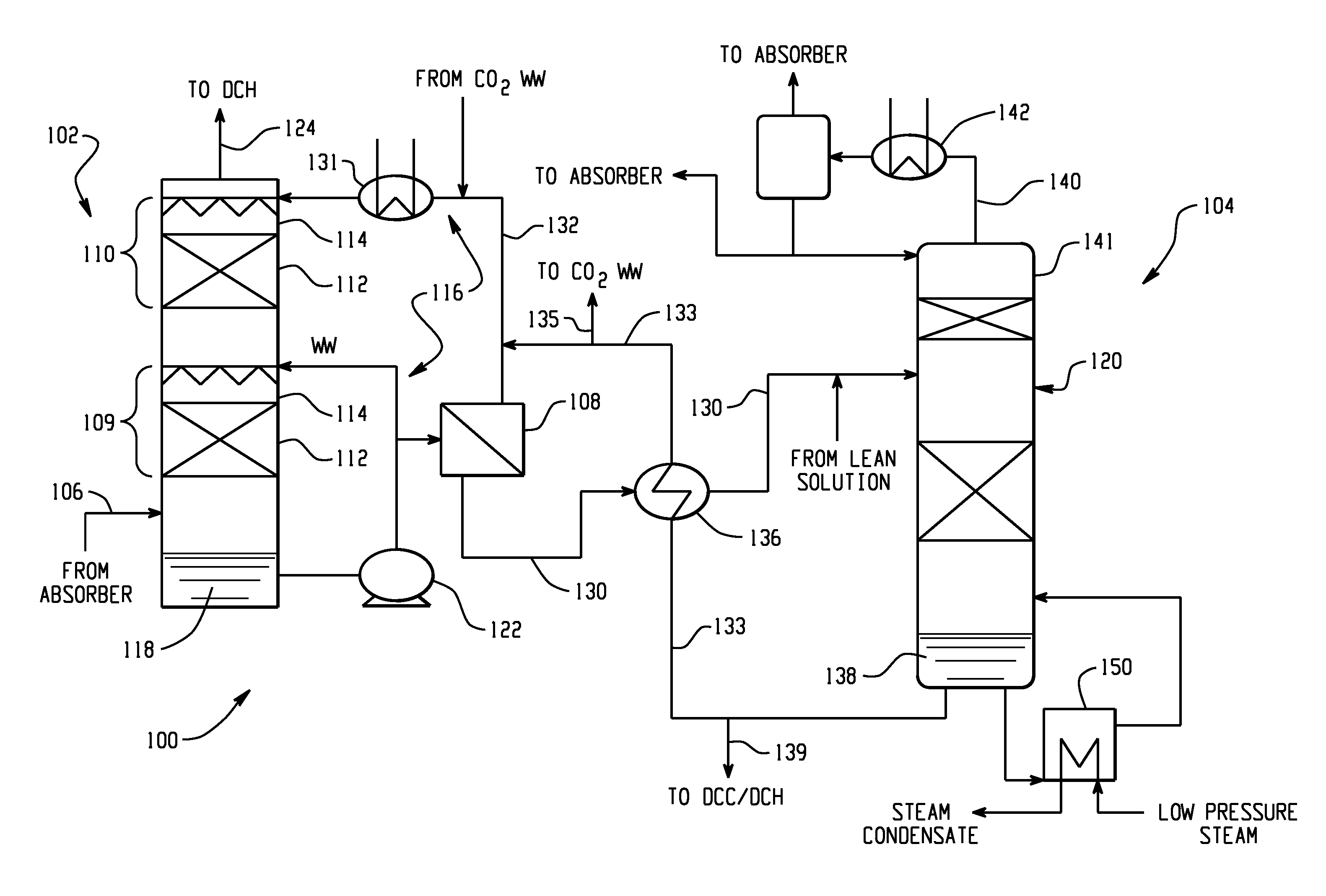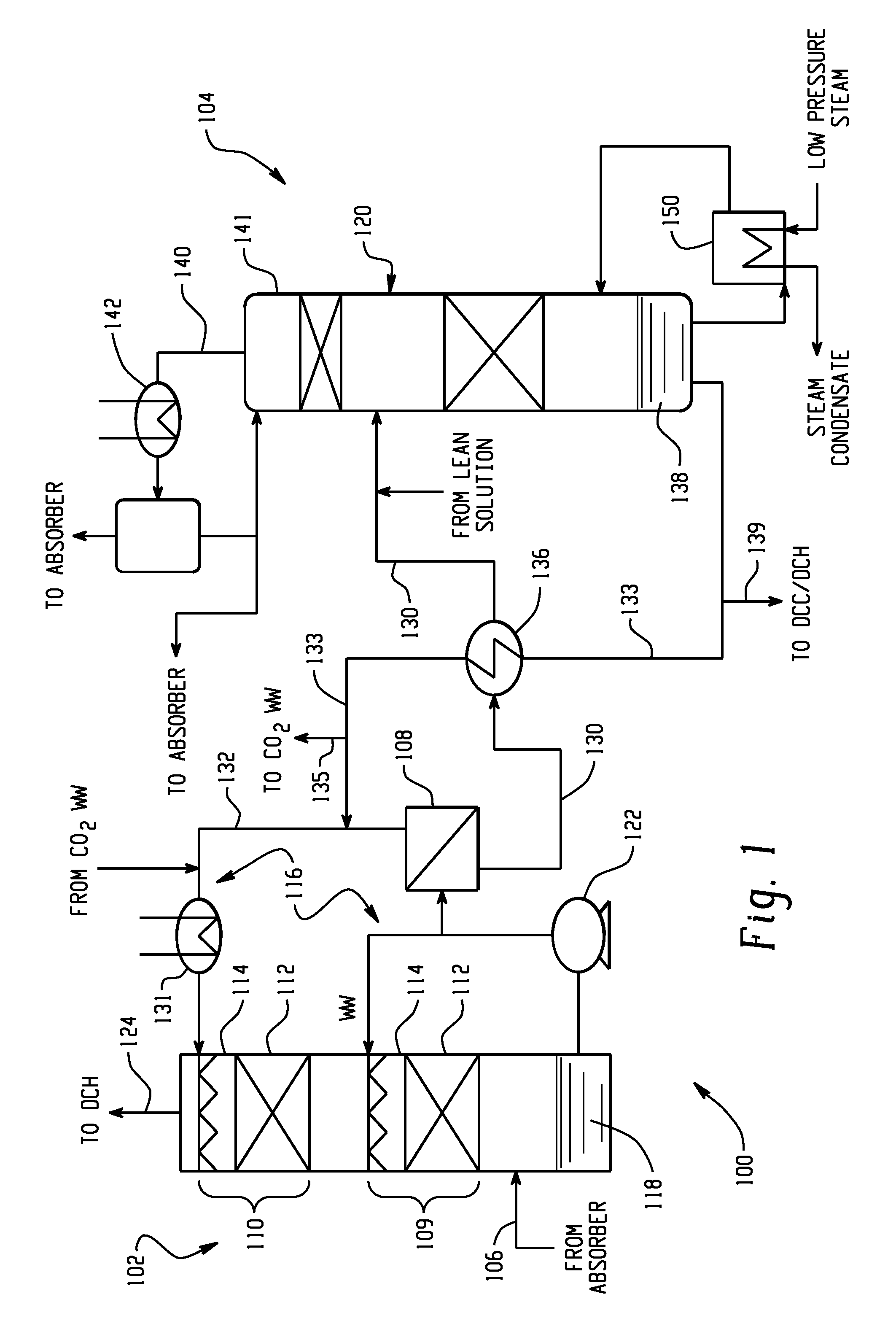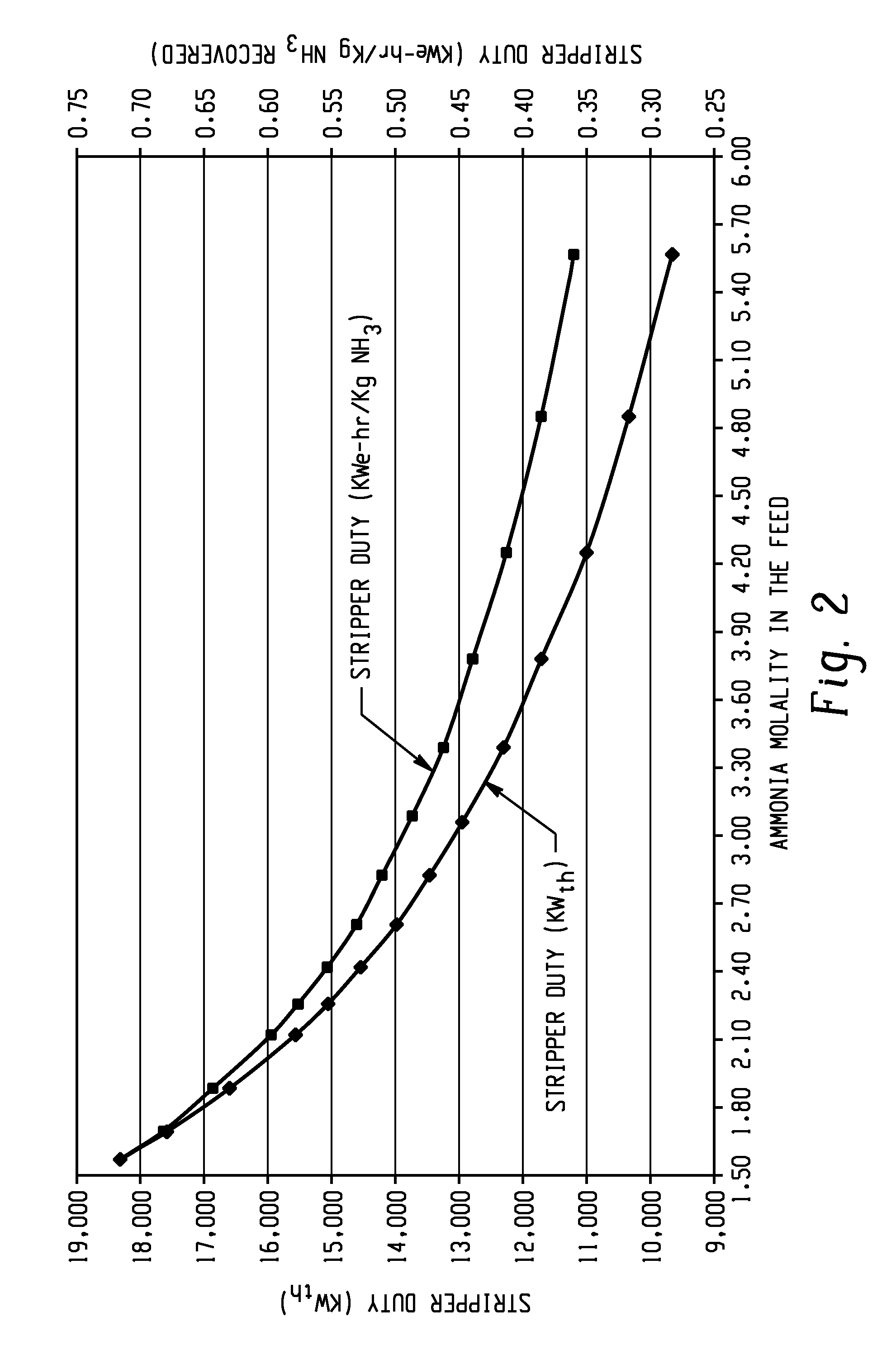Chilled ammonia based co2 capture system with wash system and processes of use
a co2 capture and ammonia technology, applied in the direction of liquid degasification, membranes, separation processes, etc., can solve the problems of integrating stripper overhead heat, high cost, and high cost of ammonia recovery process, so as to reduce energy consumption, reduce ammonia slip, and efficiently recover ammonia slip
- Summary
- Abstract
- Description
- Claims
- Application Information
AI Technical Summary
Benefits of technology
Problems solved by technology
Method used
Image
Examples
example 1
[0039]In this example, stripper duty as a function of ammonia molality was measured in terms of kilowatts thermal (KWth) and kilowatts electrical-hours per kilogram of ammonia recovered (KWe-hr / kg NH3 recovered). Inlet ammonia molality (m) was varied from about 1.50 to about 5.70 at a constant flow rate. The stripper feed had an Rvalue (moles NH3 / moles CO2) of 2.0, a stripper operating pressure of 1.7 bara, and a temperature of 110° C. The ammonia concentration of the liquid at the stripper bottom was at about 0.1 molar (M). FIG. 2 graphically illustrates stripper duty as a function of the ammonia molality. As shown in FIG. 2, greater than about 50% stripper duty KWe-hr / kg NH3 recovered can be reduced.
example 2
[0040]In this example, stripper power consumption was measured as a function of ammonia slip from an absorber. The stripper feed from the water wash vessel had an Rvalue (moles of NH3 / moles of CO2) of 2.0, a stripper operating pressure of 1.7 bara, and temperature of 110° C. The inlet ammonia containing flue gas entering the wash vessel was varied between about 1800 to about 11,500 parts per million by volume (ppmv) at a constant flow rate. The ammonia concentration of the liquid at the stripper bottom was at about 0.1 molar. FIG. 3 graphically illustrates stripper power consumption as a function of ammonia slip from the absorber during operation. As shown, increasing the amount of ammonia slip from the water wash vessel resulted in a lower specific stripper duty per Kg of ammonia recovered, thereby requiring lower power consumption requirements.
[0041]Advantageously, the high molarity retentate reduces the stripper steam consumption significantly as is evidenced by the data provided...
PUM
| Property | Measurement | Unit |
|---|---|---|
| temperature | aaaaa | aaaaa |
| temperature | aaaaa | aaaaa |
| temperature | aaaaa | aaaaa |
Abstract
Description
Claims
Application Information
 Login to View More
Login to View More - R&D
- Intellectual Property
- Life Sciences
- Materials
- Tech Scout
- Unparalleled Data Quality
- Higher Quality Content
- 60% Fewer Hallucinations
Browse by: Latest US Patents, China's latest patents, Technical Efficacy Thesaurus, Application Domain, Technology Topic, Popular Technical Reports.
© 2025 PatSnap. All rights reserved.Legal|Privacy policy|Modern Slavery Act Transparency Statement|Sitemap|About US| Contact US: help@patsnap.com



